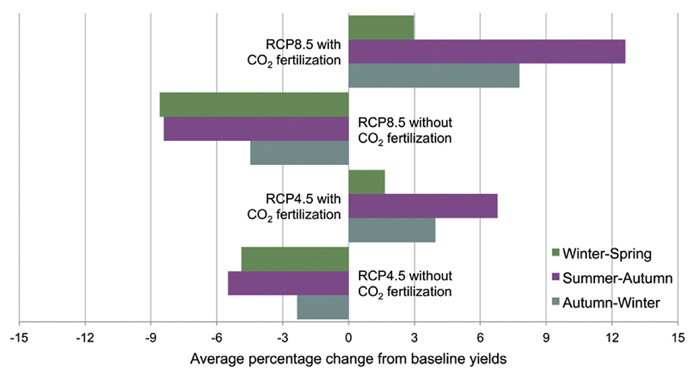| Tweet | Follow @co2science |
Paper Reviewed
Kontgis, C., Schneider, A., Ozdogan, M., Kucharik, C., Tri, V.P.D., Duc, N.H. and Schatz, J. 2019. Climate change impacts on rice productivity in the Mekong River Delta. Applied Geography 102: 71-83.
Few are the model-based studies of future agricultural production and food security that include the positive benefits of atmospheric CO2 enrichment.
Known as the CO2 fertilization effect, higher levels of atmospheric CO2 have bene conclusively proven to stimulate crop growth and yield. Nevertheless, most studies estimating future crop production and/or food security fail to incorporate the CO2 fertilization effect, or they undervalue its magnitude and thereby obtain estimates of future food production that are lower than what is likely to occur.
Bucking this trend, Kontgis et al. (2019) recently performed a model-based study of rice production in the Mekong River Delta of Vietnam in which they estimated future changes in yields based on the IPCC's future climate change RCP4.5 and RCP8.5 scenarios for mid-century, both with and without CO2 fertilization effects.
Results of their analysis revealed that the approximate 0.8 °C and 1.3 °C predicted rise in average temperature by 2050 in the RCP4.5 and RCP8.5 climate scenarios caused rice yield declines of up to 5.5% and 8.6%, respectively. However, when the CO2 fertilization effect was included in the model runs, this trend reversed; mid-century rice yield estimates compared to the 2000 baseline scenarios rose as much as 6.7% and 13% in the RCP4.5 and RCP8.5 scenarios, respectively. Thus, the total impact of the CO2 effect was to increase 2050 rice yields (relative to 2050 yields calculated without CO2 fertilization) by 12.2% and 21.8%, respectively, in the RCP4.5 and RCP8.5 simulations.
The results of this study reveal that when the positive effects of atmospheric CO2 enrichment were adequately considered the very sign of future yield projections changed, from an expected decline to a welcomed increase. And that is great news for the agricultural industry and for the future of global food security.

Figure 1. The average percentage changes in rice yields in Can Tho, Vietnam, at mid-century (approximately 2050) versus baseline values at the beginning of the century, as calculated for two future climate scenarios for all three seasons both with and without CO2 fertilization effects. Source: Kontgis et al. (2019).




